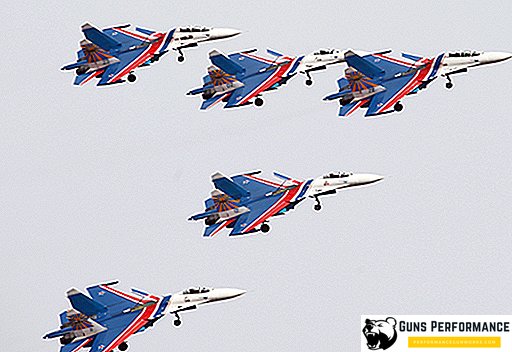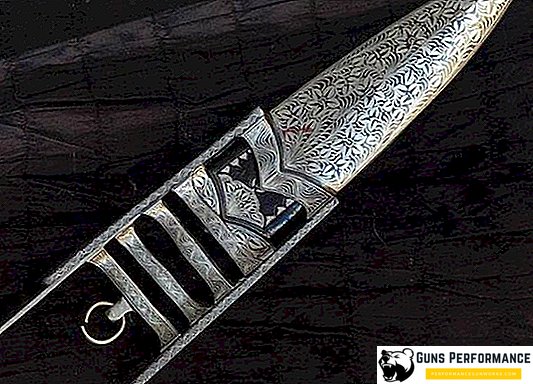
Qatar - the weapon of ancient Indians, belongs to the class of knives, brass knuckles or knotted knives. This form of weapon - not uncommon, and met in China, Indonesia and even in some European countries. However, only in India it has a symbolic and religious significance. The name Qatar can be translated as the tongue or blade of the god of death. Qatar was especially honored by Rajputi (who considered themselves descendants of the Kshatriya military caste) and used it as an additional weapon for the left hand, by analogy with the European dago.
Judging from written sources, the peak of the popularity of the Cathars came in the period from the 16th to the 18th century, although this weapon is much older. The first mentions are found in the 14th century, although these records were made by travelers who did not know exactly for how many centuries before this the indigenous population used these weapons.
Types of Cathars and their main elements
Cathars were of various shapes, with different lengths of the blade, and consisted of the following elements:
- The main part of Qatar was a blade with a length from 10 to 100 centimeters. The shape of the blade of the classical Qatar resembled an isosceles triangle. Sometimes there were blades with a wavy blade, which caused non-healing wounds. But the diamond-shaped section of the blade in combination with the blade width made any deep wound fatal. Sometimes there are Cathars with two or three blades;
- From the beginning of the blade depart two iron plates that protect the forearm and wrist. With enough skill, they could put blocks to protect against strikes with a sword or sword. Naturally, a hard parry is out of the question; it means blocking of sliding shots when the defense is substituted at a certain angle;
- At a certain distance from the blade, the protective plates are held together by two transverse handles. Sometimes the crossbar could be one, but this did not always provide the necessary rigidity of the structure.
With the development of firearms, Cathars of noble people began to combine with two pistols. This design was very traumatic for its owner, and the accuracy of the shot left much to be desired.
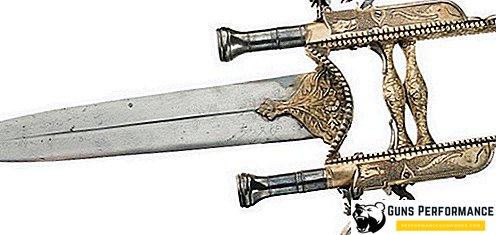
There are cases when, before the fight, Qatar was attached to the hand with ropes or special belts. Tied to the hand of Qatar is not lost under any circumstances. Although for the ancient Hindus, tying a weapon to a hand had a slightly different meaning and signified a willingness to accept death in battle or fight until complete victory.
There were special military designs of the Cathars, which differed in more diamond-shaped section and the thickness of the blade. They were intended for penetration of enemy armor. In order to strengthen the tip when hitting the metal, armor-piercing catars had a blade thickening near the tip.
As can be seen from the features of the structure, Qatar was not intended for applying cutting blows. Wishing to correct this deficiency, the master gunsmiths created special samples of Cathars with a curved blade, although these are more civilian options intended for inflicting non-lethal wounds. The piercing properties were practically lost at the same time.
Non-standard Cathars
There was a very interesting model of Qatar, "Jamadhar Selikani" or Qatar with three blades. In the folded state, it is a classic single-edged Qatar. When clicking on the cross member, a mechanism opens, which opens the blade like a flower bud. The two halves diverge in different directions like scissors, and the third blade opens in the middle.
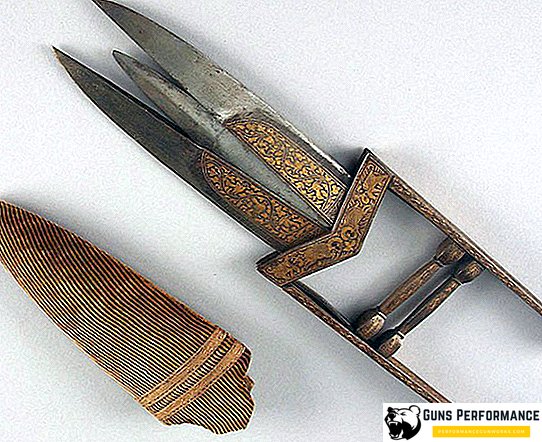
In the literature, there is often an opinion that characterizes such Qatar as a weapon of death, that the blades would open inside the body of the enemy, cutting its internal organs. It is difficult to imagine the springs of such a force that could cause Qatar to open up inside the human body. Yes, and the blow itself must be inflicted on the entire length of the blade, and it will be like a mortal wound.
A more plausible version seems to be the theory of using the drop-down Qatar to capture and hold the enemy's blade in order to strike him with the main weapon in his right hand. It was hardly possible to tear out or break the blade of a sword or sword using such a Qatar, but it is quite realistic to hold it for a couple of seconds. In a deadly duel, a couple of seconds can give the opportunity to deliver a fatal blow by themselves and get out of the battle by the winner. Numerous finds of three-bladed Cathars testify to their popularity (an ineffective weapon simply could not exist for a long time, since its creator died in the very first battles).
In the 15th century, Cathars of new design appeared in the south of India - having a special protective shield, like the protection of the rapier. With the love characteristic of the Hindus, all the ornaments on the shields were often made in the shape of a cobra's head with a bloated hood. They were called no less beautiful than they looked - "bringing death". Such Cathars were used in combat as weapons for the main hand. The creation of a protective guard triggered the evolution of Qatar. As a result, another specific Pata weapon was invented.
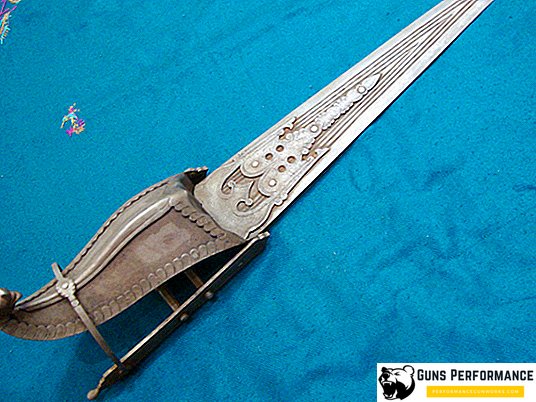
The sword pata, as a turn of evolution of Qatar
In the process of evolution, military Qatar with a protective guard developed into a new weapon - the sword of pata. Unlike Qatar, the stalemate was a weapon designed primarily to break through armor. The long, narrow blade did an excellent job of this task. The protective plates of the Qatar evolved into a pata bowl, which covered most of the hand, and reached the forearm.
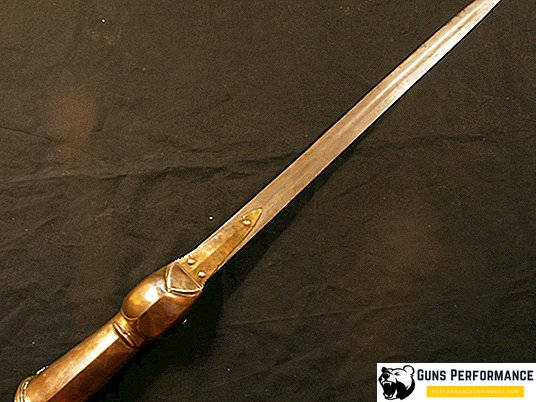
Features of the design of Qatar
The first samples of the Cathars were made in the form of solid designs of the blade and handle. Most likely, such models were military. On civilian, decorated with gold and patterned patterns, a construction on rivets is usually found. This is understandable, because military models do not need various excesses, they are simple and reliable tools for killing. Civil models, on the contrary, emphasized the status of the owner more than they served as weapons.
Most of the Cathars were made of Indian Bulat, which was sold by weight of silver. In combination with the length and thickness of the blade of Qatar, this fact directly indicates that Qatar was a weapon for rich warriors and nobles.
Despite the highest quality of the bulat used for the production of catars, the blades were additionally strengthened when forging with special stiffeners. The grooves on the blades made it possible to reduce the weight of the weapon, expand the blade by saving material, and carry out different hardening at certain places of the blade. Beautiful damask patterns on the blade appeared as a result of etching and polishing the surface of the blade.
There were damask blades, on the edge of which tips were made of different steel. Most likely, this is the result of combat damage and subsequent repair of weapons.
Cathars for simple warriors
Despite the high price of damask katars, some simple warriors also had them in their arsenal. They made simple kataras of broken swords and sabers, unlocking blades at the base to shape the triangle. There was a mass of Cathars, with blades of European swords and sabers. They mainly met in the territories of India, which were actively trading with the Europeans. Then they bought up broken and unusable swords, at a price slightly higher than the price of scrap iron. India at that time had the most advanced metallurgical knowledge, and local blacksmiths easily turned worthless swords into new Cathars.
Hunting catars
There is a legend that the Cathari were used to hunt tigers. Indeed, many paintings and illustrations of that time show hunters with Qatari, and on one, Qatar is used in a battle with the tiger. A similar legend exists about the kukri combat knife. Any sensible person will understand that hunting a tiger with a dagger, knife or Qatar is pure suicide. Especially fearless hunters could finish off the wounded predator with a knife, but no more. The drawings say only that the hunter is trying to save his life, using Qatar as the last chance.
Decorative finishing of the Cathars
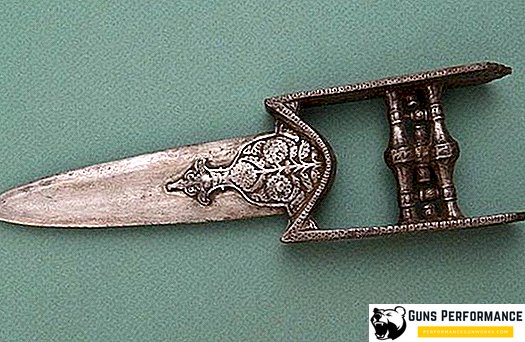
In connection with the caste system, only a group of military castes and nobles owned weapons in India, so most of the Indian weapons are richly decorated with precious metals, bone carving and decorated with stones. Masters in India were able to make a notch in gold or silver. They knew the technology of embossing and enameling. It was the custom to give richly decorated weapons to rulers or wealthy landowners.
To decorate the Cathars most often used the technique of "koftar" - notches in gold. She was performed in the following way:
- The sharp needle was applied drawing from deep scratches;
- Gold wire is scratched;
- The wire is hammered in with a hammer;
- The surface is heated and re-injected;
- Polished.
In the old paintings you can see that Qatar is the constant companion of the rich and noble warriors. Even at feasts and official receptions, all the warriors are depicted with Cathars.
Combat technique
Classical Qatar was used as a weapon for the left hand in combination with a saber. At a distance of Qatar, blocks and parries were put, with a rapprochement they struck a short fatal blow. Sikhs used Qatar as their main weapon, paired with a small shield. Sikh warriors loved Qatar precisely because of its ability to kill with one blow. Their code forbade killing unnecessarily (especially causing suffering to the victim).
In southern India, Qatar was used as a weapon for dense thickets and cramped spaces. Qatar was worn to the left at the waist, in front of the saber.
Technique work Qatar is still preserved in the state of Kerala. It uses stabbing blows on various trajectories. When pricked, the blade of Qatar rotates flat to the ground. This helps him to enter between the ribs, and when struck in the cervical region affects many blood arteries. Chopping technique is poorly developed, although many masters use it. The blows in this case are similar to the hand-sword karate technique, and are performed with an enclosure embedding in the blow. There is also a technique of strikes on the return of weapons, double-edged sharpening allows them to be carried out without turning the blade.
Qatar is still in India considered a symbol of military prowess. In the 19th century, the Rajputs painted Qatar at the end of their signature. In the 19th century, the image of Qatar came across on rupees and first stamps.
The banner of the principality of Mewar is also decorated with Qatar, which symbolizes the struggle for independence.
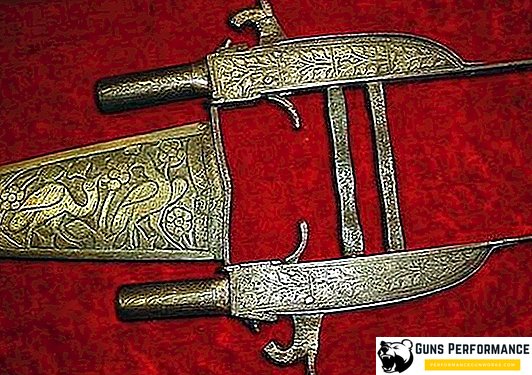
Thanks to the love of Indians for their traditions, Cathars can be found all over India, and anyone who wants to master the Qatar battle technique can learn from local masters who have been transmitting their art for many centuries.











